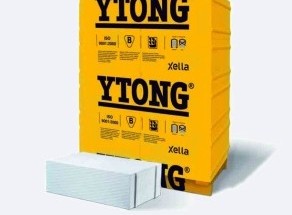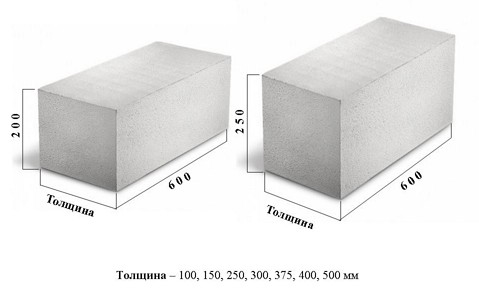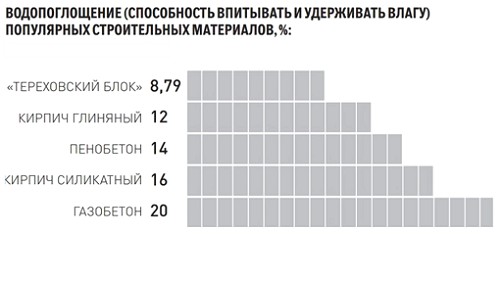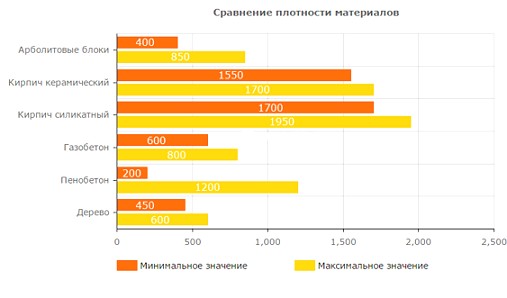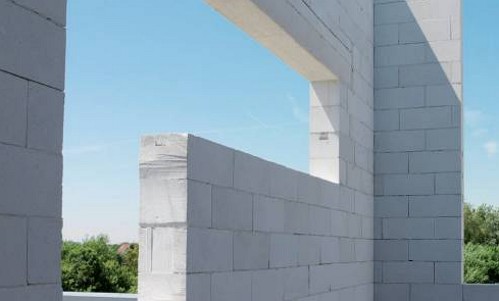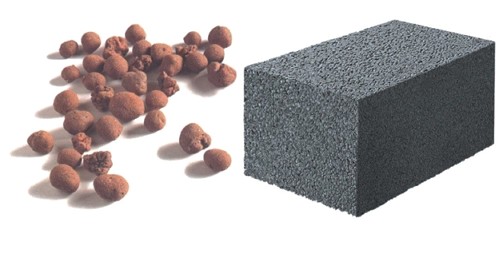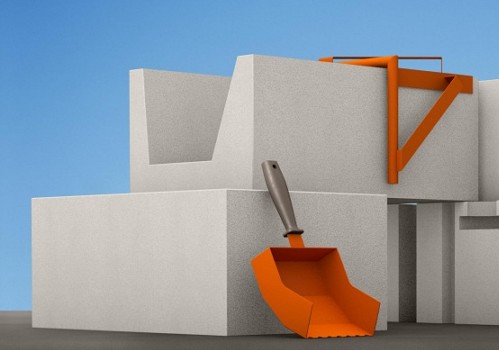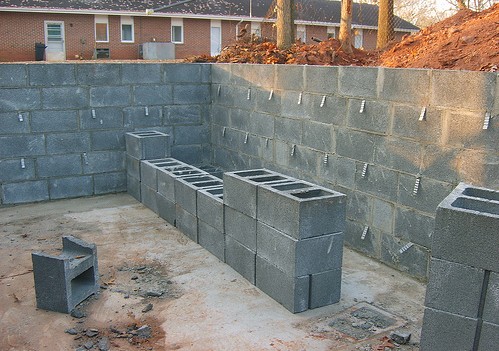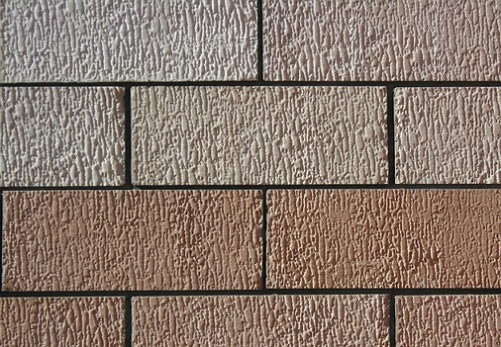The building materials of domestic producers, commonly called "wall blocks", are the main fighting unit of the construction industry. Fundamental research conducted by the best research institutes of the country is aimed at creating quality characteristics of wall blocks. However, this does not exclude the proper use and application of the material.
Content
Blocks for walls, which are: standards and requirements
The most popular building material, widely used in the construction of structures of any type, are wall blocks. The industry produces wall blocks of light, heavy and cellular concrete.
Wall blocks, designed for the erection and construction of a private house, are made by vibration-pressing on special equipment. As part of the mix for the production of blocks there are cement, binder, filler and water.
The scope of the blocks is industrial and civil construction. For low-rise construction of private houses that do not exceed a height of 14 meters, the outer wall blocks are the main building unit.
The main technical characteristics of the wall blocks and recommendations for use are defined in the relevant regulatory documents and regulations.
According to the normative document GOST 19010-82, where it is stipulated the production of blocks with the use of concrete, the use of building material is recommended in heated houses. According to GOST 28984-91, the geometric dimensions of the blocks relative to the coordination sizes "... must be a multiple of the module 1 / 2M equal to 50 mm".
In addition, the quality characteristics of the wall blocks in accordance with GOST 13579-78 must meet the purpose and be used for the installation of walls or foundations. Naturally, more reliable information can be gleaned from the properties of the wall blocks.
Properties of wall blocks
The properties of blocks for walls are characterized by the following quantitative and qualitative parameters:
• product density
• strength characteristic
• heat conductivity index
• frost resistance and water absorption.
The main characteristic of any wall block is a certain strength, corresponding to the amount of compressible load that the unit can withstand. In addition, the "density" parameter of the block will show the presence of voidness and the material of manufacture. In a homogeneous claydite-concrete material, the density coefficient reaches 1500 kg / cm3, in contrast to the density coefficient of a gas-concrete block equal to 450 kg / cm3.
A significant characteristic of building blocks is also the index of thermal conductivity. This indicator characterizes the potential of the thermal energy radiated from 1 m2 of the wall. For example, the heat conductivity index for D400 gas silicate blocks is 0.10 W / (m ° C), and for claydite-concrete blocks with a density of 500 kg / m3, 0.17-0.23 W / (m ° C).
The frost resistance index of wall blocks means the number of freezing-freezing cycles after which the material loses 10 percent of its original strength. This indicator depends on the region of construction and has conditional time coefficients.
And, finally, the water absorption of blocks is no less important characteristic, especially for wetlands.
Types of wall blocks
According to the manufacturing technology and the material used for this material, the following types of wall blocks are distinguished:
• aerated concrete
• gas silicate
• expanded clay concrete.
aerated concrete
Aerated concrete blocks (artificial stones) are manufactured in an industrial way from cellular concrete. As part of the material for the production of blocks, a mixture of cement-sand and additives of lime, water and aluminum powders. The difference of the blocks is the cellular structure providing good thermal insulation, exceeding the concrete index. The industry produces blocks of aerated concrete blocks of standard dimensions 600х250х300 mm with a weight of about 20 kg. The block density is 500 kg / m3.
A significant volume of blocks, and low weight allow increasing the efficiency of construction and installation works without using special equipment and attracting small mechanization funds. Compared with construction bricks, the price of cellular blocks is small.
The operational life of houses and structures made of aerated concrete blocks averages 25 years.
gas silicate
Cellular concrete or gas silicate blocks are made from a mixture of sifted sand, lime and cement. In the process of gassing use aluminum powder. The standard size of one gas silicate block is 600х200х300 mm.
Depending on the operational conditions of use, the following silicate wall blocks are distinguished:
• structural (weight 20-40 kg), brand D700 and above, intended for the erection of walls of load bearing houses of high number of storeys
• structural and thermal insulation or partitions (weight 17-30 kg), brands D500, D600, D700
• heat-insulating (weight 14-21 kg), grade D400 and below used for erecting the contour of load-bearing partitions and walls.
The density of the gas silicate blocks depends on the material type: D400, D500, D600 and corresponds to the number of cells per 1 cubic meter of material. So, for example, in 1 m3 of block of mark D500 contains 500 kg of a solid substance, the rest is in a porous state.
By the way, this density index corresponds to the density of the timber from the tree.
Let's add that the cellular concrete fully meets the requirements and standards required for the construction of walls and partitions, providing a minimum thickness of the masonry seam.
The life of the gas silicate blocks is 25-30 years.
expanded clay
But more promising and popular material, produced by modern technologies, is claydite-concrete blocks.
Blocks are made of expanded expanded clay, cement and water. The standard block size is 200x200x250 mm, weighing up to 10 kg.
The density of expanded clay blocks is from 500 to 1800 kg / m3. Strength index is characterized by cement strength marks M50-M500.
According to TKP 45-2.04-43-2006 "Building heat engineering" the coefficient of thermal conductivity depends on the density of the unit's condition (in dry or in an exploitable state).
For example, for a block with a density of 1800 kg / m3, which is in a dry state, the thermal conductivity coefficient is 0.66 W / (m ° C), and in the operational one it can reach 0.92 W / (m ° C).
The industry produces full-bodied and two-three hollow blocks.
Blocks are distinguished by improved qualities, combining the strength and ability of the material to perform the function of a kind of humidity regulator in the house.
Blocks of expanded clay are used throughout the construction of walls and partitions. Compared with other block materials, the weight of expanded clay blocks significantly reduces the load on the foundation. This quality is a potential opportunity for erecting more floors.
The service life of structures from blocks of expanded clay concrete reaches 50 years.
Features of the blocks of expanded clay in the construction of walls are shown in the video.
Thus, when choosing wall blocks it is recommended to pay attention to the characteristics: strength, density and thermal conductivity. The more significant the load on the load-bearing walls and partitions is planned, the more solid the density indicator should be.
When building the foundations of houses and laying low walls, it is allowed to use blocks of wall-type foundation type.


